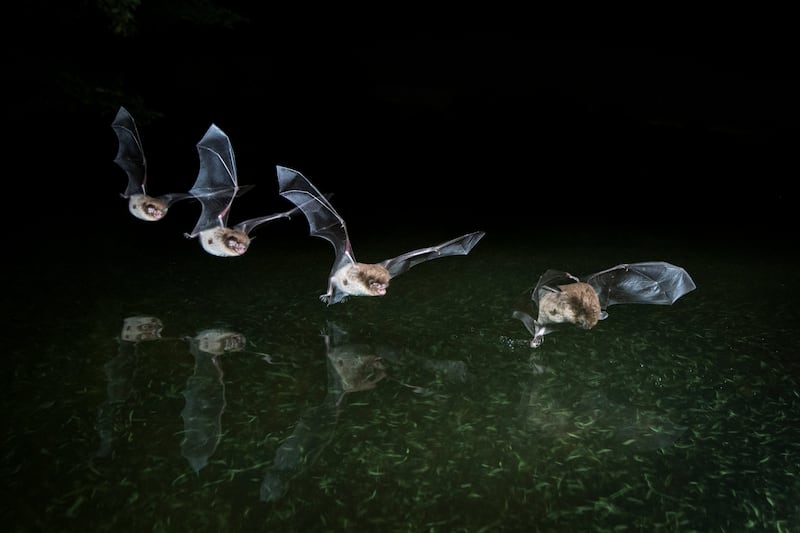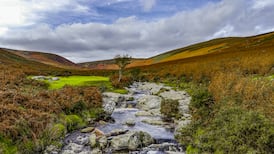At first, the connection between bat declines and infant mortality might seem unlikely – even far-fetched. But a recent study in the journal Science reveals otherwise, showing that even those indifferent to nature might have other good reasons to care about its collapse.
The story begins in the mid-2000s when researchers in New York noticed a white, fuzzy growth on the noses, wings, and ears of sick and dying bats. The culprit soon became apparent – Pseudogymnoascus destructans, an invasive fungus that thrives in the cold, damp conditions of underground caves where bats hibernate.
As bat populations across North America plummeted, the effects rippled. As natural pest controllers, bats consume thousands of insects each night, so their decline led to an increase in insect populations. In response, farmers turned to pesticides, increasing their usage by about 31 per cent to protect their crops. The resulting rise in environmental toxins led to an 8 per cent increase in infant mortality, with environmental economist Eyal Franke of the University of Chicago, who authored the Science study, estimating 1,334 additional deaths across 245 US counties. As ecologist Frank Edgler aptly said, “Nature is not more complicated than you think; it’s more complicated than you can think.”
As night-time temperatures rise above 8 degrees in Ireland in the coming months, bats will emerge from hibernation and again take to the skies. They rely on cool, stable conditions in winter, typically found in underground caves. Their urban hibernation sites remain a bit of a mystery, though researchers suspect they take refuge over winter in parks, green spaces and natural shelters such as large hollows in oak trees.
Let’s be ambitious for a plan to establish a real record of the majestic Shannon’s condition
An extraordinary find in the Irish Sea left experts gobsmacked
The golden plover’s numbers in Ireland have dwindled to a few isolated strongholds
A damp, soggy shed is frustratingly impractical but it has attracted visitors: snails
The females will have sperm stored since last autumn; it’s only when they emerge in the spring that they will ovulate and become pregnant. Being tiny mammals with warm blood, the females give birth and produce thick, fat, protein-rich milk that the pups suckle from mammary glands near the mother’s armpit.
The good news is that, of the six bat species monitored since the mid-2000s (out of nine resident species in the country), their populations seem to be stable or even increasing. However, according to Bat Conservation Ireland, this progress likely stems from a low starting point, following significant declines over the past few centuries.
Tracking bats isn’t easy, but one method used in Ireland since 2003 is the car survey. About 70 volunteers across the country drive slowly along back roads and main roads with bat detectors attached to the passenger-side window. These detectors capture high-frequency ultrasonic sounds emitted by bats and convert them into audible sounds for humans, recording the species found.
Since the pandemic, in the early summer evening, about 45 minutes after sunset, Martha Barron (18) and her father, Chris, head on to the roads near Killarney in Co Kerry to search for bats. With an orange flashing light on the roof and their hazard lights on, they drive slowly at 24km/h while the bat detector on the passenger-side window picks up any activity.

Now a seasoned expert with years of experience, Martha – an animal science student at Kerry College of Further Education – can predict which bat species will be nearby. Over bridges and rivers, the detector often picks up Daubenton’s bat, also known as the “water bat”, recognised by its silver belly and habit of flying low over the water. She also frequently spots common pipistrelles, among the smallest bats in the country, weighing about the same as a gold wedding ring. These tiny bats consume thousands of insects each night.
A rarer sight, Martha says, is the lesser horseshoe bat. This species is confined to the west of Ireland, where it hibernates in the limestone caves of Clare and Galway during the winter and spends summers in deciduous woodlands and scrub. Martha only detects it inside Killarney National Park, where it feeds on moths, spiders, flies and butterflies. Ireland is considered a European stronghold for this bat species.
Bats thrive and hide in darkness, so whenever possible, at sunset, when they emerge to feed, turn off or dim any outside lights
This month is the perfect time to prepare for emerging bats, and fortunately there are simple ways to help them thrive in your local area. Bat Conservation Ireland has published a series of short videos and tips for making green spaces more bat-friendly.
Whether you have a garden or just access to a balcony, or influence over green spaces at schools, sports clubs, churches, businesses or community buildings, the same advice stands: don’t mow – let the grass grow. The longer the grass, the more winged insects it will attract, which guarantees a good feed for the bats.
Bats thrive and hide in darkness, so whenever possible, at sunset, when they emerge to feed, turn off or dim any outside lights. Artificial light disrupts their circadian rhythm and makes them visible to predators such as barn owls and kestrels. Also, try to avoid the “kill shelf” at the gardening store whenever possible: pesticides, herbicides and sticky traps are insect killers and will leave bats to starve; not only that, but they also harm their biology, altering their behaviour and leading to reproductive failure.
So, what is it that they like? Fortunately, it’s the same things that support many other species: thick, flowering hedgerows; native, Irish-provenance trees such as hawthorn and oak, ideally draped in ivy; ponds where insects thrive; plants such as wild roses, clover, primroses, honeysuckle and knapweed.













